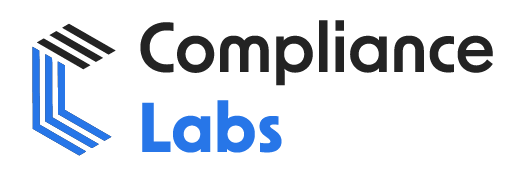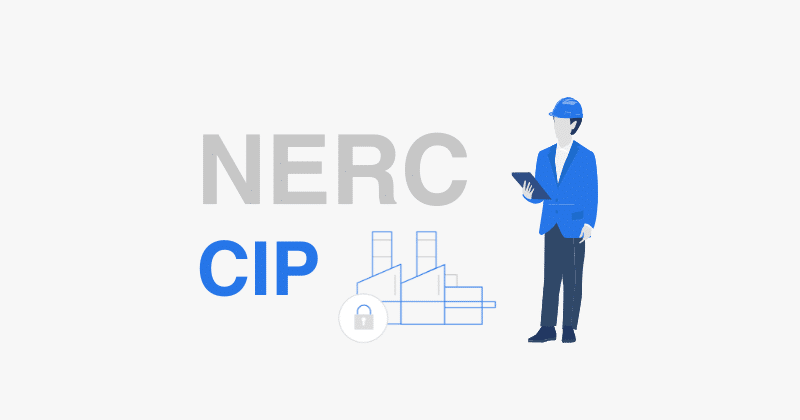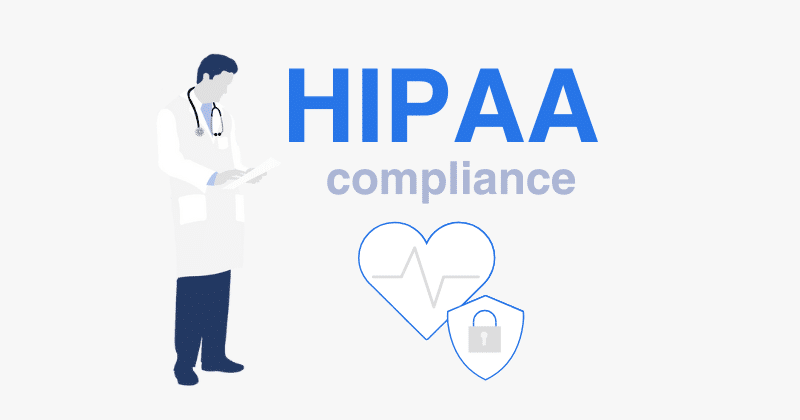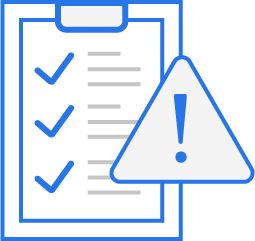The integration of digital technologies into healthcare is no longer a futuristic vision—it’s the present reality. Electronic Health Records (EHRs), telemedicine, medical devices connected to networks, AI-driven diagnostics, and cloud-based solutions are revolutionizing patient care and operational efficiencies. But, as we bring in these amazing new tools, we also open the door to unprecedented cybersecurity risks. So, how do we navigate this tricky landscape? A healthcare organization’s ability to protect patient data, ensure system availability, and maintain regulatory compliance hinges on one fundamental element: a comprehensive and actively managed IT asset inventory.
Think of it this way: Imagine you’re running a bustling hospital, and all your critical equipment – from life-saving monitors to patient databases – are connected to the internet. Now, imagine you don’t know where half of that equipment is, or whether it’s properly secured. That’s the risk of not having a solid IT asset inventory!
Failing to maintain a robust IT asset inventory is akin to navigating a minefield blindfolded. Without a clear picture of what assets you have, where they reside, and their security status, you’re essentially leaving your organization vulnerable to cyberattacks, data breaches, and regulatory sanctions. This comprehensive article explores the critical role of IT asset inventory in maximizing secure health innovation while navigating the complex landscape of NIST CSF Cybersecurity Framework and HIPAA compliance.
The Escalating Threat Landscape: Healthcare Under Siege
Healthcare has become a high-value target for cybercriminals. Medical information is easily monetized and sold on the dark web, providing high value for personally identifiable data that is needed for all types of sensitive information such as finance and other data. It’s sad, but true: healthcare data is worth a lot to the bad guys. The value of sensitive data translates into a growing volume of attacks to the sector. A data breach is the last situation anyone wants, especially with already overburdened organizations with limited data protection authorities.
The consequences of cyberattacks are severe, ranging from financial losses and legal penalties to reputational damage and compromised patient safety:
-
Financial Loss: These include the immediate costs from recovery and remediation, plus the costs of audits and compliance and potentially the civil liability.
-
Reputational Harm: Reputations take years to build, so maintaining a good record is important for ensuring clients’ long-term buy-in.
-
Legal Trouble: HIPAA can fine organizations in the millions for any improper release of data or data management and documentation.
-
Patient Safety and Patient Care: Loss of data, delays in response, and general outages can seriously damage the patient’s wellbeing.
It’s not just about money or reputation, it’s about people’s lives. In healthcare, cybersecurity isn’t just an IT issue; it’s a patient safety issue.
IT Asset Inventory: More Than Just a List
An IT asset inventory is not just a static list of devices and software. It is a dynamic, ever-evolving resource providing a detailed snapshot of your organization’s IT landscape. At a minimum, it should include:
-
Hardware: Servers, workstations, laptops, mobile devices, network devices (routers, switches, firewalls), medical devices (imaging equipment, infusion pumps, etc.).
-
Software: Operating systems, applications, databases, security tools, middleware, APIs.
-
Data: Patient records, administrative data, financial data, research data.
-
Configurations: Detailed settings for hardware, software, and network devices, including security settings, access controls, and patch levels.
-
Ownership: Identification of the individual or department responsible for each asset.
-
Location: Physical or virtual location of each asset.
-
Security Status: Patch levels, vulnerability scan results, compliance status.
-
Network Connections: Identification of how devices or equipment connects to the network, which can be an entry point for malicious actors.
Think of your IT asset inventory like a comprehensive map of your digital territory. You need to know every path, every building, and every potential weakness to defend it effectively.
The Intersection of NIST, HIPAA, and IT Asset Inventory
NIST and HIPAA are distinct but complementary frameworks. HIPAA focuses specifically on protecting the privacy and security of Protected Health Information (PHI), while NIST provides a broader set of cybersecurity standards and best practices applicable across various industries. Both emphasize the importance of risk management and the need to implement appropriate security controls.
HIPAA is like the law of the land for healthcare data security, while NIST is like a set of best-practice building codes that help you construct a solid and secure system.
An effective IT asset inventory serves as the foundation for meeting the requirements of both NIST and HIPAA:
-
HIPAA Privacy Rule: It requires covered entities to reasonably safeguard PHI and to limit uses and disclosures to the minimum necessary (45 CFR § 164.502(b)). An IT asset inventory helps identify where PHI is stored, processed, and transmitted, enabling organizations to implement appropriate access controls and security measures to protect it.
-
HIPAA Security Rule: HIPAA regulations mandate the adoption of Administrative Safeguards, Technical Safeguards and Physical Safeguards to provide appropriate security.
-
NIST Cybersecurity Framework (CSF): An IT asset inventory directly supports the Identify function of the CSF (ID.AM-1, ID.AM-2), enabling organizations to understand their cybersecurity risks and prioritize security efforts. It also supports the Protect function (PR.AC-1, PR.DS-1), enabling organizations to implement appropriate security controls to safeguard their assets.
-
NIST SP 800-53: As a detailed catalog of security controls, NIST SP 800-53 provides specific guidelines for protecting federal information systems and organizations. An IT asset inventory helps organizations select and implement the appropriate security controls based on the specific characteristics of their IT environment.
How to Maximize Secure Health Innovation through Effective IT Asset Inventory
Here’s a step-by-step guide to building and managing an IT asset inventory that supports secure health innovation and HIPAA compliance. This isn’t just about following the rules, it’s about empowering your organization to innovate safely and confidently.
-
Establish a Robust Inventory Process:
-
Rule: NIST SP 800-53 RA-2 (Vulnerability Scanning), NIST CSF Function: Identify (ID.AM-1: Physical devices and systems within the organization are inventoried; ID.AM-2: Software platforms and applications within the organization are inventoried), and NIST SP 800-66 Section 1. Consequently, among others, provide valuable guidance for security implementation.
-
Guidance: This should include not only all equipment that is connected to your network, but also any equipment brought in by associates, contractors, and staff. It is especially important to also enumerate what ePHI is accessible through that device. It is key to create policies to prevent unauthorized devices from accessing ePHI.
-
Actionable Tip: Leverage automated discovery tools that support a wide range of operating systems, network devices, and cloud services. Some popular options include Lansweeper, SolarWinds, and Qualys. In addition, have an easy-to-implement method for associates to add their equipment into the inventory with oversight.
It’s like taking a census of your digital kingdom. You need to know who’s living there and what they’re up to.
-
-
Define Scope Comprehensively Assessing
-
Rule: NIST SP 800-53 RA-2 (Vulnerability Scanning).
-
Guidance: It is important that the threat and vulnerability assessment scope includes not only hardware and location, but also the potential sources and the potential impact. Specifically, the organization should identify who and how the device was damaged by a cybersecurity attack.
-
Actionable Tip: Conduct the process simultaneously with identifying reasonably anticipated threats to ePHI.
Don’t just look at the hardware; think about the “who, what, where, when, and why” of potential threats.
-
-
Classifying and Prioritizing Assets:
-
Rule: NIST SP 800-53 CM-8 (System Component Inventory), NIST CSF Function: Identify (ID.AM-5: Resources (e.g., hardware, devices, data, time, personnel, and software) are prioritized based on their classification, criticality, and business value).
-
Guidance: The amount of energy spent on a particular asset should be weighed relative to the risk to the organization. A small piece of equipment that controls all data may need more intense focus than a large piece of equipment that is for auxiliary operations.
-
Actionable Tip: Weigh the costs between implementing the control, managing or not managing, and potential fallout.
Prioritize your defenses based on what’s most valuable and most vulnerable. It’s like deciding which doors to lock first when a storm’s coming.
-
-
Implement Robust Access Controls
-
Rule: NIST SP 800-53 AC-3 (Access Enforcement), CM-7 (Configuration Management), 45 CFR § 164.312(a)(1), Technical Safeguards.
-
Guidance: For all devices containing ePHI, access controls must be implemented according to guidelines from Security Rule, HIPAA. Identify all users who have access to ePHI and ensure access is terminated if no longer required. All data should come with the proper integrity of use.
-
Actionable Tip: Test this process regularly in the organization and with the implementation of new team members.
Control who can get into which rooms in your digital hospital. Don’t give everyone the keys to the operating room!
-
-
Implement and Document Appropriate Procedures
-
Rule: 45 CFR § 164.316 – Policies and procedures and documentation requirements.
-
Guidance: For an organization to effectively follow the HIPAA Security Rule, it is not enough to simply follow the steps outlined by HIPAA; rather, there must be documentation to support those steps, demonstrating to regulators that a system is in place. In other words, compliance requires both action and proof of action. Furthermore, all policies and procedures must be easily accessible and reviewed routinely for potential updates.
-
Actionable Tip: Set up calendar reminders and assign responsibilities to the relevant employees to guarantee follow up.
If it’s not written down, it didn’t happen! Document everything and keep it up-to-date.
-
-
Implementing Sanction policies
-
Rule: 45 CFR § 164.308(a)(1)(ii)(C), Sanction Policy
-
Guidance: The document must cover employees and workforce members who have failed to comply with any security and access controls that govern ePHI. Indeed, this will ensure that all users are held accountable for maintaining and accessing data.
-
Actionable Tip: Ensure sanctions for those with access and proper communication as to why they can access.
Have consequences for those who break the rules! This helps maintain a strong security culture.
-
-
Secure Remote Access
-
Rule: 45 CFR § 164.311(b)(1), Facility Access Controls, 45 CFR 164.312(e)(1), Transmission Security
-
Guidance: Mobile medical care may be provided by way of laptops, phones, and other remote devices. Therefore, it’s important to properly limit access to any facilities where the medical teams connect and ensure that transmission security is maintained on the public network.
-
Actionable Tip: Ensure that any equipment traveling outside the organization is covered and protected.
Treat remote access like you’re letting someone into your house with a key – make sure you trust them!
-
-
Maintenance and Storage
-
Rule: 45 CFR § 164.310(d)(2)(iii), Accountability
-
Guidance: Be certain that you retain record of the movements of hardware and electronic media and any person responsible for the upkeep of ePHI. This is especially important with the increasing accessibility of personal data.
-
Actionable Tip: Maintain a list of all changes and personnel that will take effect when hardware changes, are upgraded, or replaced to ensure compliance.
Keep track of where your stuff is, who’s responsible for it, and what changes are made! It’s like a digital chain of custody.
-
-
Train all Employees:
-
Rule: 45 CFR § 164.308(a)(5), Security Awareness and Training
-
Guidance: Develop a security awareness and training program for workforce members. When there are security breaches, there should be training that shows how to contain the amount of the breaches.
-
Actionable Tip: Ensure that the training is accessible and relevant to ensure that it is used correctly.
Turn your employees into a security-conscious workforce! They’re your first line of defense.
-
Challenges and Considerations
Building and managing an effective IT asset inventory in healthcare isn’t without its challenges:
-
Complexity: Healthcare IT environments are often highly complex, with a wide variety of devices, systems, and applications.
-
Legacy Systems: Many healthcare organizations rely on legacy systems that may not be easily integrated into modern inventory management tools.
-
Mobile Devices: The proliferation of mobile devices makes it challenging to track and manage all assets.
-
Medical Devices: Securing medical devices, such as imaging equipment and infusion pumps, requires specialized expertise.
-
Budget Constraints: Implementing and maintaining an IT asset inventory can be costly, particularly for smaller organizations.
It’s not always easy, but it’s always worth it. You need to be aware of the challenges and plan accordingly.
Future Trends: IT Asset Inventory in the Age of AI and Cloud
The future of IT asset inventory in healthcare is likely to be shaped by several emerging trends:
-
AI-powered Discovery: AI can be used to automatically discover and classify IT assets, reducing the manual effort required.
-
Cloud-based Inventory Management: Cloud-based solutions offer scalability, flexibility, and ease of management.
-
Integration with Threat Intelligence: Integrating threat intelligence data with IT asset inventory allows organizations to prioritize security efforts based on the latest threat landscape.
-
SBOM and Component Analysis: The Software Bill of Materials (SBOM) will become increasingly important for identifying and managing software supply chain risks. Specifically, it offers transparency into the components within software, aiding in vulnerability detection and mitigation.
Technology is constantly evolving, and so should your IT asset inventory. Stay informed about emerging trends and adapt your strategy accordingly. The growth of AI for Healthcare is skyrocketing. Be ready for it by incorporating the right security measures.
A Path to Secure and Innovative Healthcare
An effective IT asset inventory is a strategic imperative for healthcare organizations seeking to embrace innovation while maintaining security and compliance. By prioritizing asset visibility, leveraging NIST frameworks, and building a culture of security, healthcare organizations can confidently navigate the digital landscape and deliver better patient care.
Don’t let fear of the unknown hold you back from embracing new technologies. With a solid IT asset inventory in place, you can innovate with confidence.
Start small, think big. Begin by focusing on your most critical assets and gradually expand your inventory to cover your entire IT environment.






